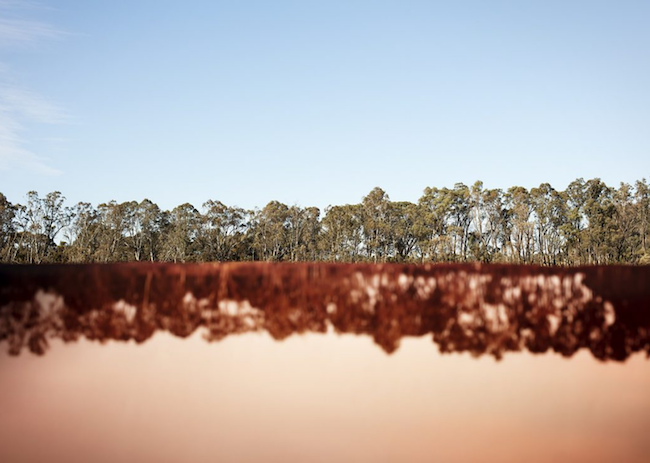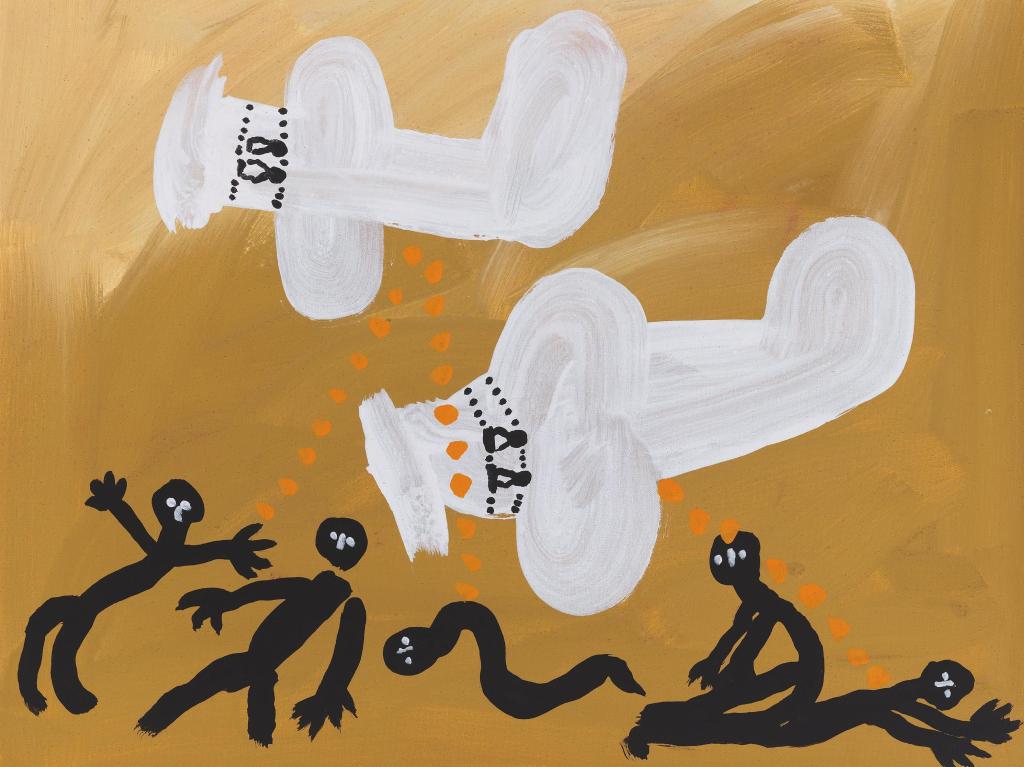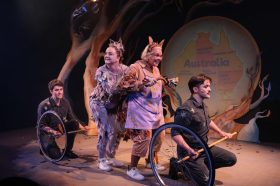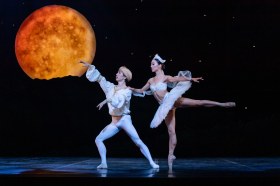Jack Dale, Japanese bombing Roebuck Bay Broome (2003); Image courtesy of the Australian War Memorial
While Anzac Day originated in the Gallipoli landing, it has become a moment when our nation stops to pay respect to the men and women who have served, both in conflict and to protect our country against potential military threat.
It is that word conflict, however, that overshadows any real tone of commemoration.
The truth is that while Australian soil has not been the footfall for war, it has a long and largely unacknowledged history of conflict – the Frontier Wars.
The term has been increasingly used by historians to speak of the violent conflicts between Indigenous Australians and European settlers during the British colonisation of Australia. Estimates place the loss of more than 20,000 Indigenous Australians and between 2,000 and 2,500 settlers during these wars.
Will these wars ever be part of the Anzac Day conversation? How will this past be written into official histories?

Tony Albert Coloured Diggers(2013); Image courtesy of the Australian War Memorial
Rethinking the numbers
During the 1970s there was a thorny history of remembering in the aftermath of the Vietnam War. Then it was the lack of acknowledging the violence against women. In 1978, a women’s group laid a wreath dedicated to all the women raped and killed during war, while in the 1980s movements for feminism and gay rights used the occasion to draw attention to their respective place in the history.
More recently, there has been greater recognition of Indigenous servicemen and women. This recognition has largely been lead by the arts. For example artist Tony Albert’s public sculpture Thou didst let fall – ‘Yininmadyemi’ (2013) was placed within sight lines of the Anzac Memorial in Sydney’s Hyde Park.
Black Diggers (Sydney Festival 2015) was a box office hit, while Country Arts SA’s Aboriginal Diggers Project has been a 3-year project (2017-2019) capturing the stories of those who served in Australia’s military from the Boer War to the present day through film, theatre and visual arts.
The project has created VIETNAM – ONE IN, ALL IN at Tandanya National Aboriginal Cultural Institute, which explores and acknowledges South Australia’s Aboriginal Veterans of the Vietnam War.
A team of Aboriginal creatives were employed to ensure these stories were told from an Aboriginal perspective, led by Creative Producer Lee-Ann Tjunypa Buckskin and Curator Jessica Clark. Each artist was paired with an Aboriginal veteran from SA who served before, during and after the Vietnam War.
‘Our aim is to uncover and give a voice to those who have remained silent while we still have them living amongst us,’ said Tjunypa Buckskin.

Bronwyn Bancroft, Time marches on (2010); Image courtesy of the Australian War Memorial
And across town, also celebrating Anzac Day this year, Samstag Museum of Art presents For Country, For Nation – a major exhibition touring from the Australian War Memorial, which reflects the experience of war from the perspective of First Nations Australians and features contemporary responses to conflict by artists such as Tony Albert, Yhonnie Scarce, Megan Cope, Gordon Bennett, Brian Robinson and Shirley Macnamara.
Samstag Museum Director Erica Green, said: ‘At a time when the unacknowledged contributions of Aboriginal and Torres Strait Islander service people, during war, have gained deserved visibility and respect in the public eye, this exhibition features works by contemporary First Nation artists that speak to the issues of war from a wholly different perspective …. [they also] importantly, remind us of the forgotten histories of Aboriginal Australians.’

Peta Clancy, Undercurrent, 2018-19; Courtesy the artist
The killing times
The Guardian states that, ‘almost 70% of Australians accept that Aboriginal people were subject to mass killings, incarceration and forced removal from land, and their movement was restricted.’ These massacres have been increasingly finding their way into art galleries.
For this Anzac Day, audiences can visit Undercurrent, a solo exhibition by Bangarang artist Peta Clancy, which was developed during a 12-month residency at the Koorie Heritage Trust (VIC).
Clancy collaborated with the Dja Dja Wurrung community (Bendigo region of Central Victoria) to research, develop and create a major series of large format landscape photographs exploring frontier violence and massacre sites on Dja Dja Wurrung Country.
Using cutting and layering techniques, Clancy’s work references the emotional and cultural scars left in the landscape by frontier violence, which have been historically and physically covered up by subsequent colonial occupation.
She says that by scarring the photographs, she depicts the layers of time. ‘When I visit the sites and create the work, I am trying to reconcile with the knowledge that violence that occurred at the site. I aim to create landscapes that contain multiple perspectives; historically and temporally. Like two worlds/histories existing in the one place.
‘The images aim to reconcile these perspectives as well as suggest a disconnection between two distinct ways of perceiving the land.’
Other significant recent examples of how art is bringing the Frontier Wars into public conversation have been Campbelltown Art Centre’s exhibition With Secrecy and Despatch (2016) remembered the 1816 Appin Massacre of Indigenous Australians. It was one of the first massacres of Indigenous Australians by the colonists.
Further north at the New England Regional Art, the 180th anniversary of the 1838 Myall Creek Massacre was remembered in the exhibition Myall Creek and beyond (8 June – 7 October 2018). Guest Curator Bianca Beetson said: ‘The artists selected for this exhibition were chosen due to their ability to create work which deepens the conversation.’
‘All of them, in different ways, interrogate dialogues surrounding Aboriginal massacres, frontier wars and hidden histories … This presented a challenge when curating this exhibition, as was I faced with trying to curate work that authentically engages with the story of atrocities such as Myall Creek, but at the same time I was mindful of not triggering trauma in Aboriginal and Torres Strait Islander audiences who share this dark history,’ Beetson added.
It is worth remembering that on Anzac Day. We need to remember – but more importantly, we need to remember with empathy and respect, because forgetting offers little of both.
VIETNAM – ONE IN, ALL IN opens 24 April and will show until June, then travels to Port Lincoln and Port Augusta from July to September.
For Country, for Nation run from 25 April -19 July 2019 at the Samstag Museum of Art. Entry is free.
Undercurrent is showing until Sunday 28 April 2019 at the Koorie Heritage, Yarra Building, Federation Square.





